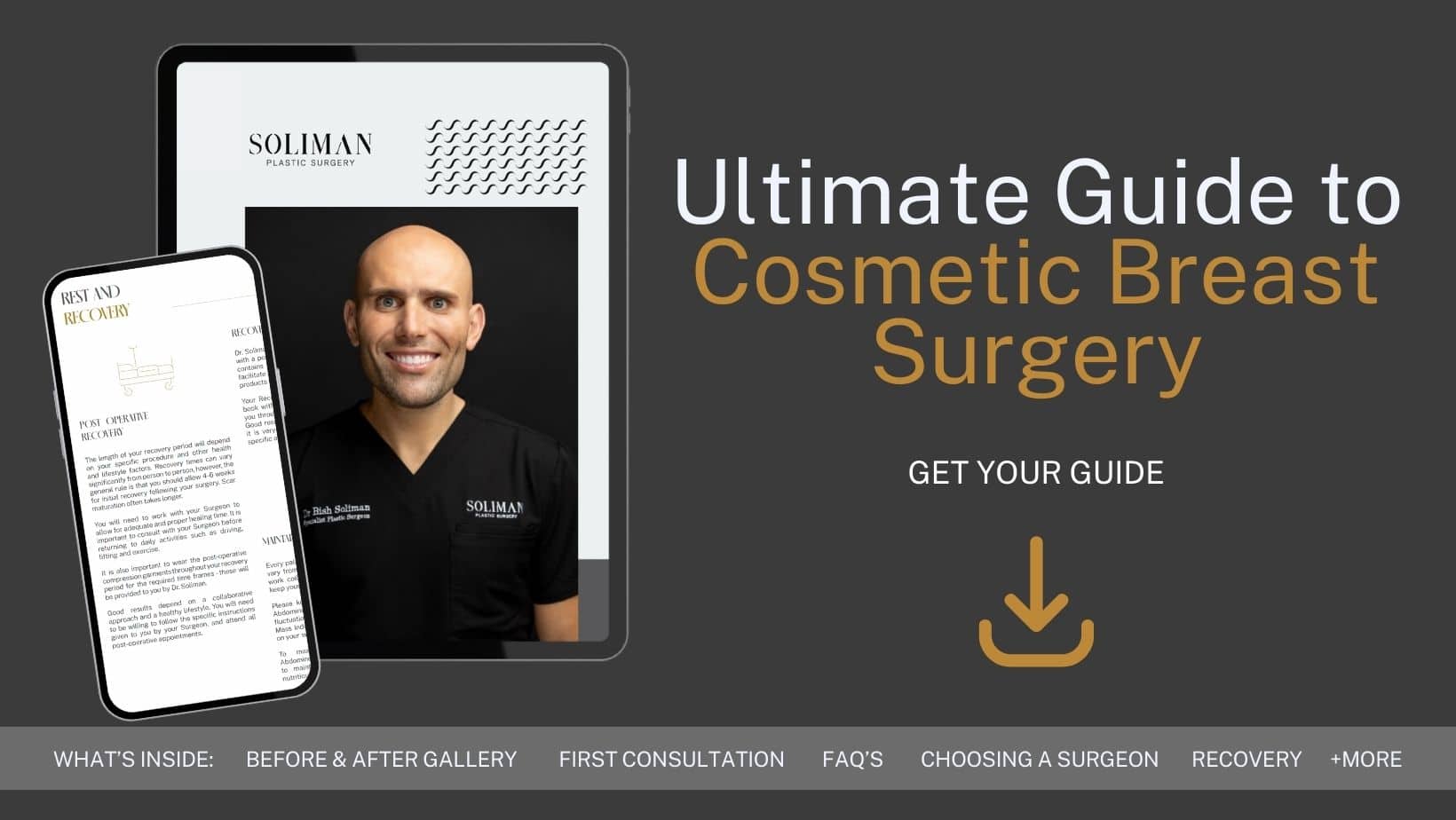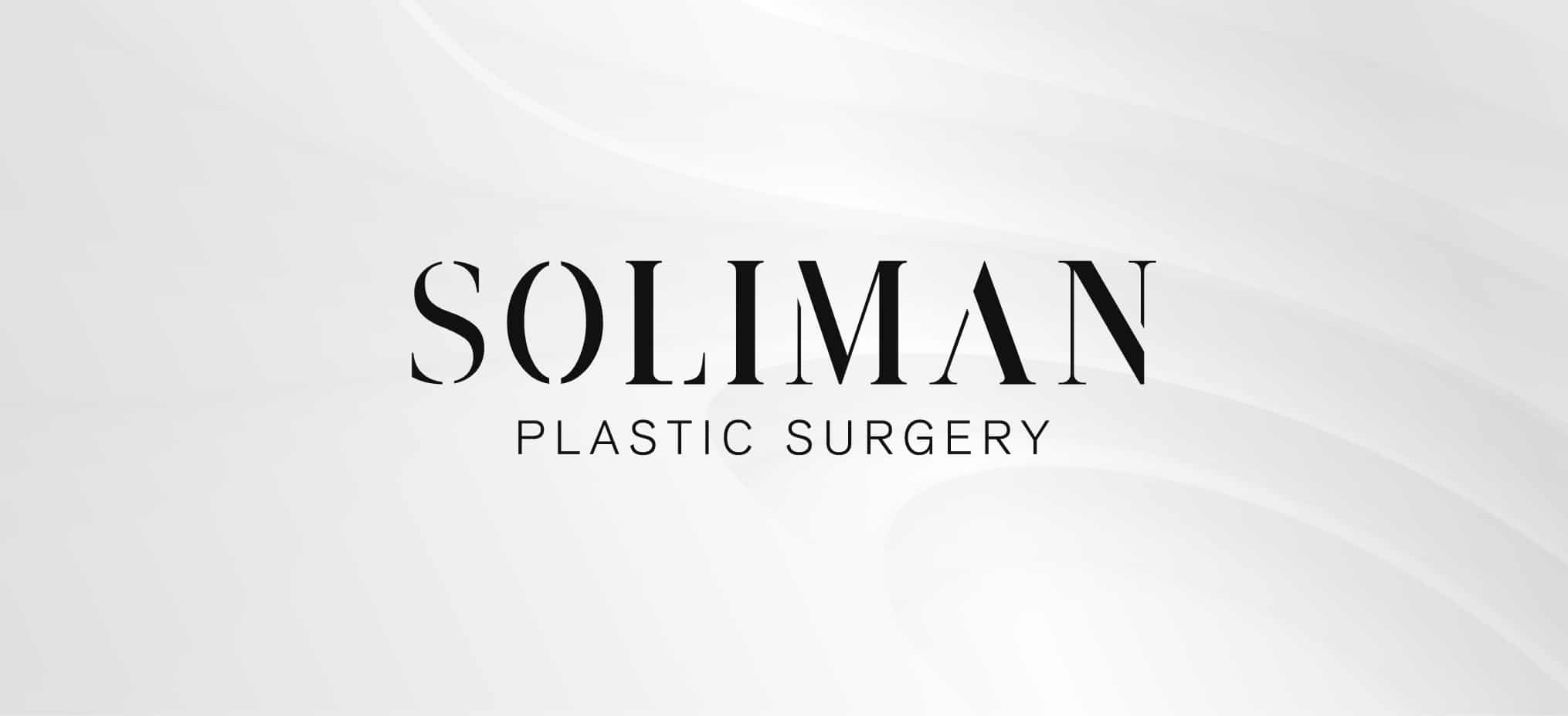After a mastectomy, a procedure in which one or both breasts are removed due to breast cancer, DIEP flap breast reconstruction surgery is designed to create a new breast, restoring a natural appearance. Women may decide to undergo the procedure to restore a sense of self confidence and comfort in their own skin, as well as to be able to wear certain clothing again and more comfortably.
What is involved in DIEP flap breast reconstruction surgery, and what can you expect should you decide to undergo the procedure? In this blog, we’ll explain the details of the procedure and some important factors to keep in mind before undergoing the surgery.
Download Dr Bish Soliman Cosmetic Breast Surgery Guide

What is DIEP flap breast reconstruction surgery?
The gold-standard for autologous breast reconstruction, A DIEP (Deep Inferior Epigastric Perforator) flap procedure uses the patient’s own abdominal tissue to create a new breast. A piece of skin, blood vessels and fat is taken from the abdomen, before being moved to the breast, creating a natural-looking shape using microsurgery. The muscle that creates a “six pack,” the rectus muscle, is not removed during the procedure, which allows your abdominal strength to remain after the surgery and ensure a faster recovery.
With the flexibility to be highly personalised, DIEP flap breast reconstruction surgery is tailored to each patient’s needs, creating the results that they desire. The procedure can take between four to eight hours to perform, depending on whether one or two breasts are being reconstructed and the complexity of the procedure.
Recovery and results
After DIEP flap breast reconstruction surgery, you may experience some pain around the breasts and the abdomen, with swelling in the abdomen that typically subsides within about three to four weeks. Your surgeon will advise you on how to best manage pain and discomfort, minimise swelling and ensure that you can recover efficiently. You will also be advised of the risks and complications of the procedure.
-
- 5-7 days of in-hospital recovery
After the procedure, you will be monitored closely with hourly observations to ensure that no complications have occurred. During this time, you will need to follow a clear fluid diet. After one day, you will be able to upgrade your diet, sit out of bed and begin chest physiotherapy. On day two, your catheter will be removed and your observations will be reduced to every two hours. You will also be able to move around more comfortably. On day three, some of your drains and your IV drip will be removed, and observations will only be made every four hours. Observations will continue to reduce until about day five or seven, when you will have a full dressing change and be discharged to continue your recovery at home. - About 6-8 weeks of at-home recovery
Once you arrive home, it is recommended that you take time off from work or your usual daily activities for about two weeks, so that you are able to get sufficient rest after the procedure. You should also arrange for someone to help you around the house, and avoid driving during this time.
- 5-7 days of in-hospital recovery
Post-operative instructions can include wearing a supportive bra, avoiding heavy lifting and strenuous exercise for about six weeks, and keeping the surgical sites clean to avoid infection. You may also need to wear a supportive garment on your abdomen to help swelling subside faster. You will be given details for a scar management plan, that typically includes wearing a specially designed tape on the incision for one to two weeks and then massaging a cream into the area before re-applying tape for about three to six weeks. Once the wound is completely healed, you may use silicone gels and sheets, typically for about six weeks to 12 months.
Most of the initial swelling should subside within three to four weeks, allowing you to begin to see the results of the procedure a lot clearer. Typically, the recovery period can last for about 12 weeks, after which you will be able to see the final results of the procedure, once any residual swelling has fully subsided.
- Follow-up appointments
You will have a follow-up with your surgeon two weeks after discharge, and then at three months. During your follow-up, you will be able to discuss the option of undergoing minor secondary procedures, that are typically only day procedures. These procedures can include liposuction, lipofilling, creating symmetry by undergoing a lift, and nipple reconstruction.
Your initial consultation
Before undergoing DIEP flap breast reconstruction surgery, you will meet with your surgeon for a consultation. Generally, a consultation involves thorough information about the procedure steps, personalised advice from your surgeon, and a tailored treatment plan to help you achieve the results that you want.
Your consultation allows you to communicate what you would like to achieve with the procedure, and any concerns you may have. With the right surgeon, your consultation should make you feel understood, supported and empowered, leaving you feeling comfortable about your surgical journey.
During a consultation, it is important for your surgeon to determine your suitability for the procedure. You will be asked some questions about your health and the history of your health, such as what medications you may be currently taking. Typically, suitable candidates will be in good current health, have enough fat in the abdominal area for the reconstructed breast, and hold realistic expectations about the results of the procedure.
Taking a personalised approach, your surgeon will always aim to find an ideal outcome for you, making suggestions that can help you to achieve your desired results.
Why to choose Dr Bish Soliman for DIEP Flap Breast Surgery
Specialist Plastic, Reconstructive and Cosmetic Surgeon Dr Bish Soliman has undergone extensive training to specialise in complex microsurgical reconstruction. He is a Fellow of the Royal Australasian College of Surgeons (FRACS), a member of the Australian Society of Plastic Surgeons and a member of the American Society of Plastic Surgeons.
Dr Bish has a special interest in complex microsurgery of the breast, as well as an interest in other cosmetic breast procedures such as breast reduction. He has trained internationally to bring advanced techniques back to Australia, now sharing these skills at two major Sydney tertiary referral hospitals.
As well as having extensive experience and training within the area of microsurgical reconstruction, Dr Bish takes a patient-centered approach, aiming to make every patient feel understood, supported and comfortable throughout their journey. Click here to read more about Dr Bish, his training, experience and philosophy.
If you’re interested in undergoing DIEP flap breast reconstruction surgery, you can read more about the procedure here and contact us to book a consultation or ask any questions you may have.



